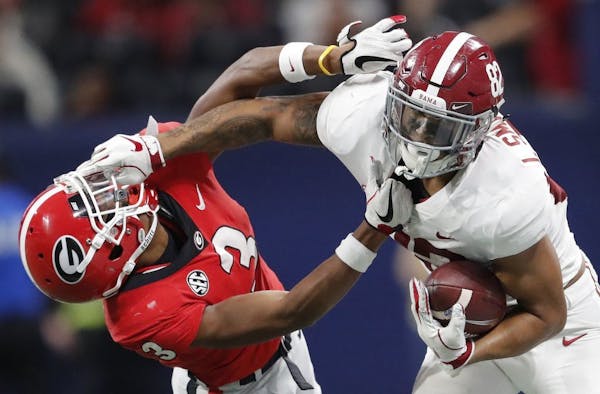The Vikings' 2019 draft class — their largest since the days when the NFL's annual selection meeting was still 12 rounds — will deliver a dozen players to the team's facility later this week for the start of the team's rookie camp.
But while the group has no lack of quantity, its immediate productiveness might be more important. The Vikings will likely ask several members of the class to play big roles quickly, especially on the offensive line, where at least one interior starting spot remains open.
With that in mind, take a look at the five biggest questions still facing the 2019 Vikings after the draft:
Q How will the offensive line come together?
A Though the Vikings made no declarations about where Garrett Bradbury would play, the North Carolina State product turned himself into a first-round pick based on his work at center after moving from the guard position. The smart money would be on Bradbury taking the center job — as long as he shows he's ready for it — and Pat Elflein shifting to guard. Fourth-rounder Dru Samia could compete at one of the guard spots, as well, though general manager Rick Spielman said the Oklahoma product "has a few technical flaws to clean up." In any case, it's very possible the Vikings' line against the Falcons on Sept. 7 could include a rookie (Bradbury), a free-agent addition (Josh Kline), a starter switching positions (Elflein), a tackle in his first full year as a starter (O'Neill) and a tackle trying to rebound from a disappointing season (Riley Reiff). The Vikings have improved their talent base on the line, but how quickly the group will coalesce is another question.
Q How does Irv Smith fit in?
A College scouting director Jamaal Stephenson said second-round pick Irv Smith was the kind of athletic fit the Vikings have been trying to find for a while, and Smith figures to be an immediate receiving threat that can line up in the slot or on the end of the offensive line. The Vikings could use more two-tight end sets in their revamped offense, after spending plenty of time in three-receiver looks under John DeFilippo last year once their search for an athletic tight end came up empty. Smith could add a unique component to the Vikings' offense that allows them to target linebackers in pass coverage.
Q Do the skill positions have enough depth?
A The Vikings hope third-round running back Alexander Mattison can replace some of Latavius Murray's contributions as a between-the-tackles runner, and seventh-round receivers Dillon Mitchell and Olabisi Johnson could add some more athletic ability behind Stefon Diggs and Adam Thielen. But the Vikings are still counting on Dalvin Cook to stay healthy through a full season, and they remain without a formidable weapon behind Thielen and Diggs, should anything happen to either one. Aldrick Robinson — a favorite target of Kirk Cousins' who caught five touchdowns last year — remains a free agent, so the Vikings could look to bring him back at some point if they can afford him. Which leads us to…
Q How will the Vikings pay their bills?
A The team entered the draft with just $1.683 million in cap space — not enough to sign all of their draft picks without going over the cap. It's been apparent for some time that they'll need to make a move for cap space, whether it's trading a veteran player or restructuring the contract of a player like tight end Kyle Rudolph, who turns 30 in November and is in the final year of his deal. Rudolph has remained adamant this spring he's still as productive as ever, and told the Star Tribune on Friday night he welcomed Smith's addition to the offense. The Vikings' selection of Smith in the same round where they took Rudolph back in 2011, however, could give the team some leverage to ask Rudolph about redoing his deal. Rudolph has said he'd be open to helping the team's cap situation with a deal that added some guaranteed money to his contract. In any case, given how quickly the Vikings like to sign their draft picks, a move of some type seems on the way soon.
Q What will it all mean for Cousins?
A The quarterback is in the second year of his fully-guaranteed three-year deal, and it's clear the Vikings have done as much as they can this offseason — from adding coaches who are steeped in the offense that made him successful in Washington to reinforcing the offensive line — to help Cousins while keeping a core of high-priced veterans together. If it all works, Cousins could answer some of the scrutiny that's followed him by leading the team to the playoffs. If it doesn't, and the Vikings miss the playoffs again, larger changes could be afoot as Cousins heads into the final year of his deal in 2020.

